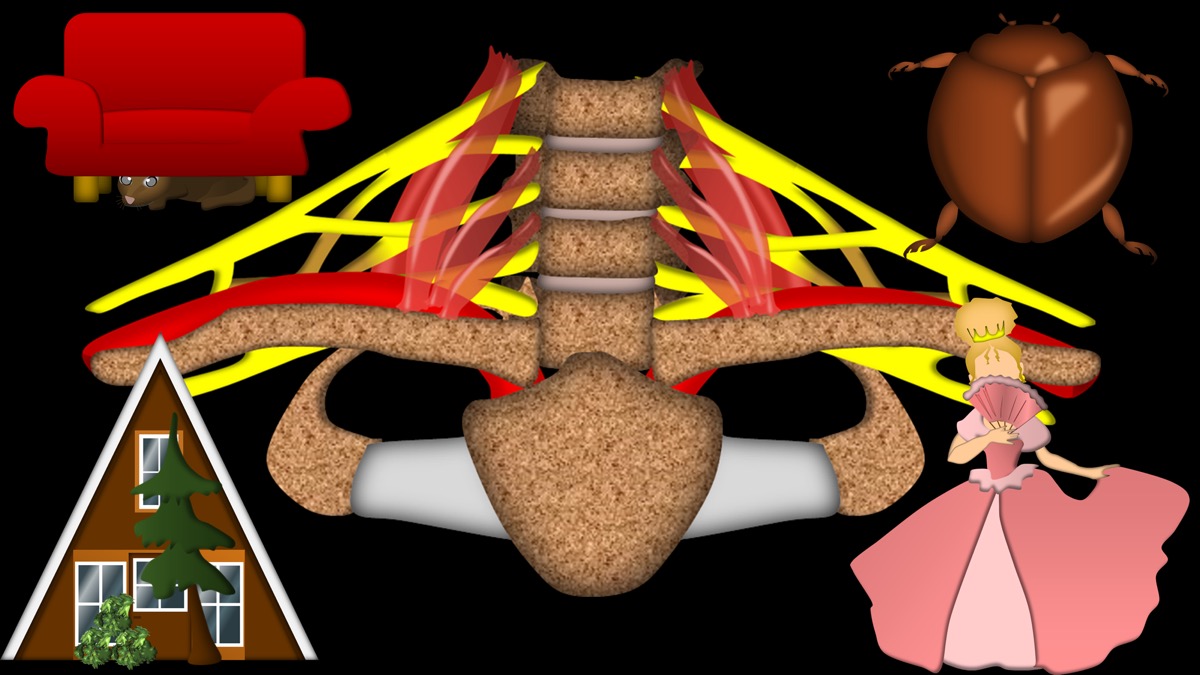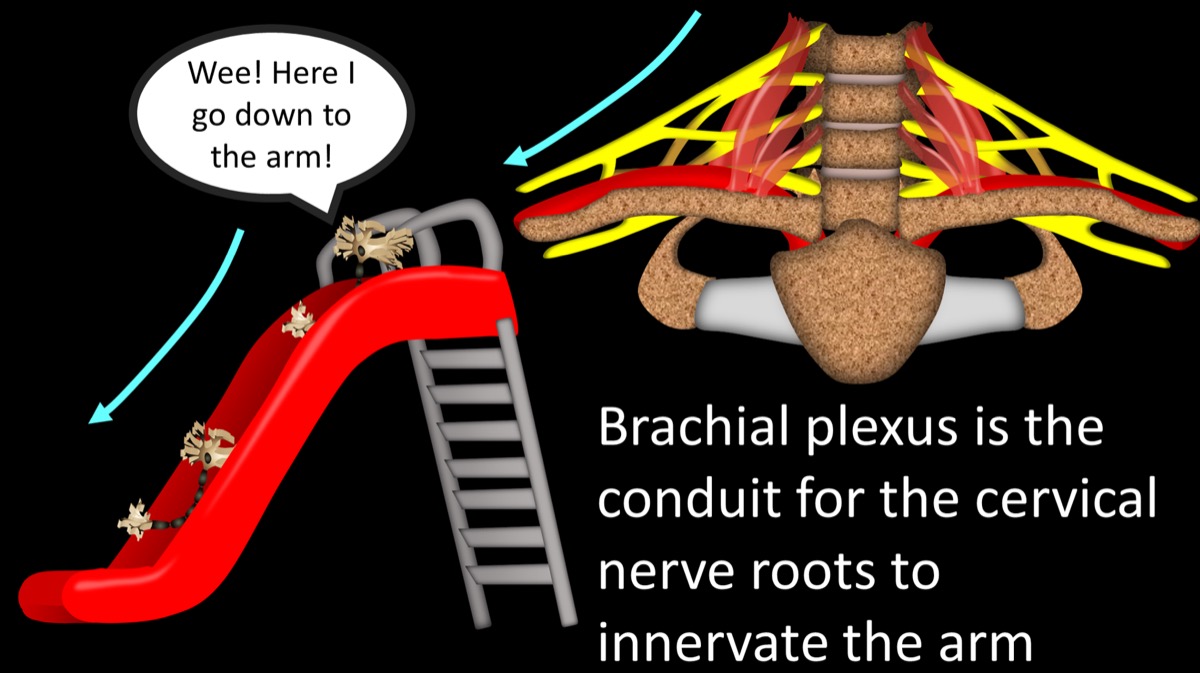
1/Ready for some heavy lifting?
You may know brachial plexus anatomy in theory, but how about in real life?
A thread about brachialplexus anatomy on MRI.


2/Brachial plexus is how the cervical nerves reach the arm. In the coronal plane, it looks like a slide, guiding nerves downward. Bc nerves are traveling laterally, sagittal MRI plane is our plane of choice to cut the nerves in cross section & see down the barrel of the nerves


3/But it’s more than a slide, it’s a complex highway, w/nerves joining & dividing—like highway off ramps & on ramps. If you want to know more about this intrinsic anatomy, see my first brachial plexus thread here: https://twitter.com/teachplaygrub/status/1575941184278581250


4/The most medial sagittal cut, right after the neural foramina, shows us the roots. (remember Rad Techs Drink Cold Beer). In the sagittal plane, the roots look like the rungs of a ladder. This makes sense, bc we are climbing up the ladder of the slide to go down to the arm


5/The anatomic landmark for the roots is the 1st rib head. I remember this bc the roots are closest to the CNS or HEAD, so they are by the rib HEAD. The roots together w/the rib head make the ladder look like a folding ladder, w/the rib head supporting the ladder root rungs


6/Here are the roots on a sagittal MRI—ladder rungs of the roots, supported like a folding ladder by the first rib head.


7/Next are the trunks. Trunks on sagittal MRI are easy—they are arranged like, wait for it…a tree TRUNK. They are right behind the subclavian artery, which looks like a little shrub in front of the tree trunk.


8/There are 2 anatomic landmarks for the trunks. Trunks are at the posterior 1st rib & in between the scalene muscles. The rib & the scalene look like an A-frame house, one that people often have for cabins in the woods. So you have trees & bushes in front of a A-frame cabin.


9/Here are the trunks on a sagittal MRI, with the trunks looking like, well, trunks & the scalene muscles making the A-frame cabin in the woods in the background.


10/Next is the divisions. I remember what these look like on sagittal images by remembering that DIVISIONS are DIVINE /DRESSY—all w/the letter D. They look like a fancy hair updo on top of the subclavian artery head.


11/The anatomic landmark for the divisions is the clavicle. The divisions sit BEHIND the clavicle. I remember this bc Victorian ladies with fancy updos will have fans that they hide their face behind. Similarly, the divisions hide behind the clavicle.


12/Here are the divisions on a sagittal MRI, they are clumped together like a fancy bun above the head of the subclavian. The clavicle is in front of them, allowing them to keep their Victorian modesty from the prying eyes of men


13/Next are the cords. The subclavian artery and the cords are organized so they look like a paw print. I remember this bc both Cord and Cat start w/C. So cords make a cat claw print.


14/Anatomic landmark for the cords is the coracoid. Cords are underneath the coracoid. I remember this bc Cats who make the paw prints are always hiding under something like a couch. So the cords hide under the coracoid. I remember it’s the CORacoid bc cats hide when CORnered


15/Here are the cords on a sagittal MRI, with the paw print hiding underneath the coracoid process above it.


16/Last are the branches. In the sagittal plane, the subclavian artery together w/the branches looks like a fat beetle with four legs. I remember this bc Branches and Beetle, or Bug, all start w/B.


17/Here are the branches on sagittal MRI, w/the subclavian artery as fat body of the beetle and the branches as the beetle’s arms.


18/You can remember this w/an old fashioned fairy tale--about a house in the woods, home to a divine but shy princess. She had a cat that hid under things & ate all bugs in the home, bc no princess wants bugs! Now you know the imaging anatomy. Raise your arms and celebrate!









 Unable to process the form. Check for errors and try again.
Unable to process the form. Check for errors and try again.